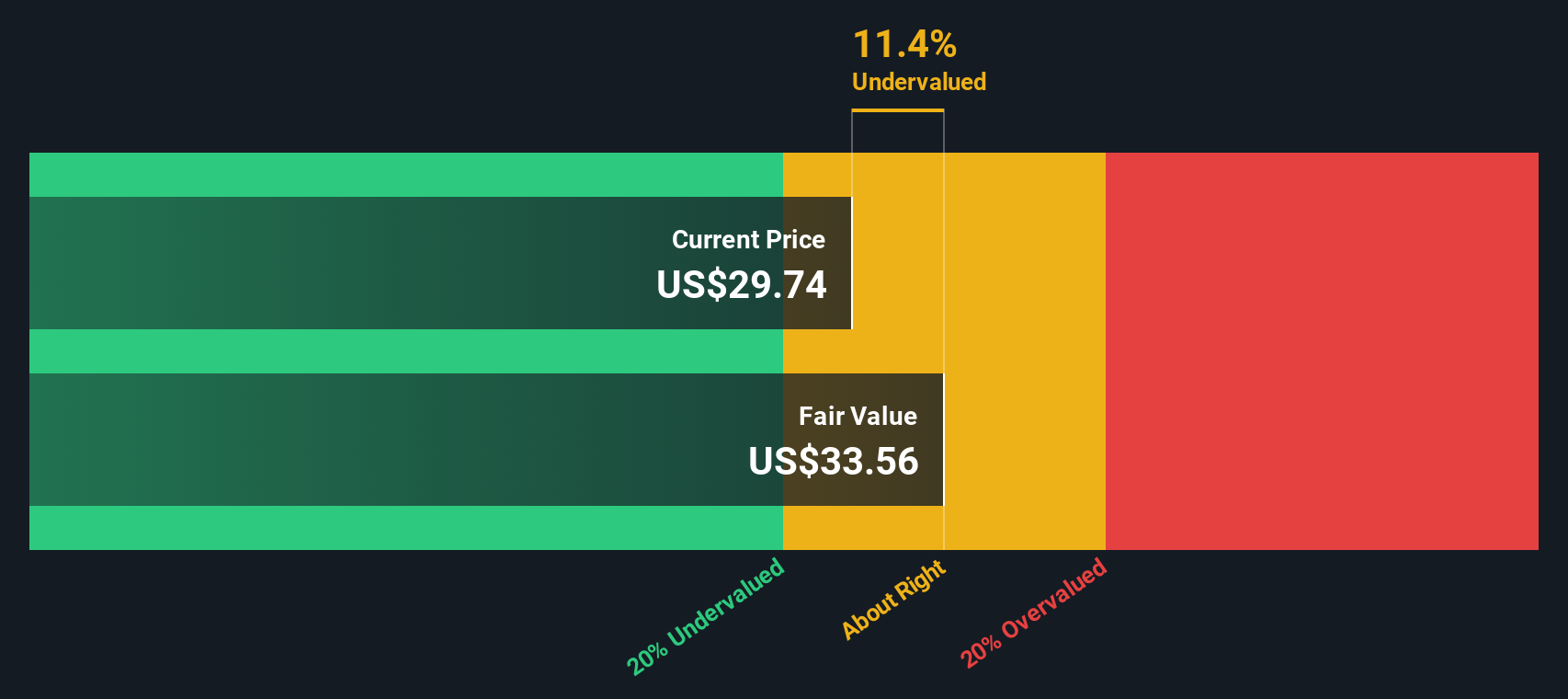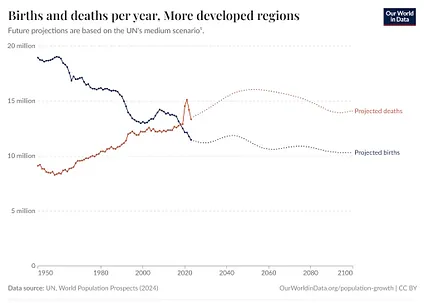NYC Incorporates and Enhances NYS Paid Prenatal Leave Requirements (US) – Employment Law Worldview

Report on New York’s Paid Prenatal Leave Law and its Alignment with Sustainable Development Goals
This report details the implementation and key provisions of New York’s Paid Prenatal Leave (PPL) law, effective January 1, 2025. The legislation represents a significant advancement in labor rights, directly contributing to several United Nations Sustainable Development Goals (SDGs), including SDG 3 (Good Health and Well-being), SDG 5 (Gender Equality), and SDG 8 (Decent Work and Economic Growth).
Legislative Overview and Contribution to Global Goals
New York has established a mandatory 20-hour paid leave allowance per year for pregnant employees to attend healthcare services. This initiative is a direct measure to support SDG 3: Good Health and Well-being, by removing financial barriers to essential prenatal care, including physical exams, medical procedures, and fertility treatments. By ensuring job and wage protection for health-related needs specific to pregnancy, the law also promotes SDG 5: Gender Equality and SDG 10: Reduced Inequalities, addressing a critical area of potential workplace discrimination against women.
New York State Paid Prenatal Leave (PPL) Mandate
The statewide law provides a foundational framework for this new employee benefit. Its provisions are designed to ensure broad and immediate access, reinforcing the principles of SDG 8: Decent Work and Economic Growth, which calls for the protection of labor rights and the promotion of safe and secure working environments for all workers.
Key Provisions of the State Law
- Direct Beneficiary: The leave is exclusively for the employee receiving prenatal healthcare services, targeting support to ensure maternal health in line with SDG 3.
- Immediate Entitlement: All eligible employees, including new hires from their first day, are entitled to the full 20 hours of PPL annually. The benefit does not accrue and cannot be subject to a probationary period, ensuring equitable access as promoted by SDG 10.
- Benefit Independence: PPL is a stand-alone benefit. Employers cannot require employees to exhaust other forms of paid leave, such as sick leave, before using PPL, thereby protecting workers’ rights under the framework of SDG 8.
- Compensation Standard: Employees must be compensated at their regular rate of pay or the applicable minimum wage, whichever is greater, upholding the SDG 8 principle of fair pay for all.
- Privacy and Accessibility: Employers are prohibited from requiring medical documentation to verify the need for leave, reducing administrative burdens and protecting employee privacy, which facilitates easier access to healthcare (SDG 3).
New York City’s Enhanced Regulations under the Earned Sick and Safe Time Act (ESSTA)
The New York City Department of Consumer and Worker Protection (DCWP) has adopted rules that incorporate and expand upon the state’s PPL law. These city-specific regulations strengthen accountability and transparency, further advancing the objectives of the SDGs.
Divergence and Enhancement for NYC Employers
While mirroring the state’s core PPL entitlements, the final rules for New York City introduce additional employer obligations that bolster the framework for SDG 8: Decent Work and Economic Growth.
- Mandatory Reporting: Unlike the state guidance, NYC employers must inform employees in writing (e.g., on a pay stub) of the amount of PPL used and the remaining balance. This transparency is a key component of fair labor practices.
- Written Policy Requirement: NYC employers are mandated to develop, maintain, and distribute a written PPL policy to all employees upon hire and whenever the policy changes. This ensures clear communication and institutionalizes the right to this leave, reinforcing a culture of decent work.
Employer Compliance and Actionable Steps for Advancing SDGs
Compliance with these regulations is a legal necessity and a tangible corporate contribution to public health and gender equality. Employers in New York, particularly in New York City, must take specific actions.
Compliance Checklist for NYC Employers
- Review and update all written paid leave policies to incorporate the new PPL provisions as required by the amended ESSTA rules.
- Ensure pay statements or other written documents comply with the requirement to report PPL usage and balances.
- Post the updated DCWP “Safe and Sick Leave Notice” in a conspicuous workplace location.
- Distribute the updated notice to all new and current employees to inform them of their rights, a critical step for ensuring the efficacy of policies aimed at SDG 5 and SDG 8.
- Maintain records demonstrating proof of distribution and receipt of the required notices for each employee.
By implementing these measures, employers are not only adhering to legal standards but are also actively participating in the advancement of a more equitable and healthy society, in direct alignment with the Sustainable Development Goals.
SDGs Addressed in the Article
The article on New York’s Paid Prenatal Leave (PPL) law addresses and connects to several Sustainable Development Goals by focusing on health, gender equality, and labor rights.
-
SDG 3: Good Health and Well-being
The law’s primary purpose is to promote the health and well-being of pregnant employees by providing paid time off for medical care. The article explicitly states the leave is for “prenatal healthcare services,” including “physical exams, medical procedures, monitoring/testing, pregnancy-related discussions with a health care provider, end of pregnancy care, and fertility treatments.” This directly supports the goal of ensuring healthy lives.
-
SDG 5: Gender Equality
By providing specific support for pregnancy-related healthcare, the law addresses a key biological and social issue that primarily affects women. Such social protection policies help mitigate career and economic disadvantages that pregnant employees might face, thereby promoting their continued participation in the workforce and contributing to gender equality in the economic sphere.
-
SDG 8: Decent Work and Economic Growth
The article is centered on a new employment law that establishes a labor right. It guarantees “20 hours per year of paid leave” for “all employees working for private-sector employers.” By ensuring employees are paid at their “regular rate” and protecting their right to take this leave without penalty, the law promotes decent work conditions and protects labor rights.
Specific Targets Identified
Based on the article’s content, the following specific SDG targets can be identified:
-
Target 3.8: Achieve universal health coverage, including financial risk protection, access to quality essential health-care services…
The PPL law contributes to this target by providing financial risk protection (paid leave, so no loss of income) for employees needing to access “essential health-care services” related to pregnancy. The article details that the leave covers a range of “pregnancy-related healthcare appointments.”
-
Target 5.4: Recognize and value unpaid care and domestic work through the provision of public services, infrastructure and social protection policies…
The PPL law is a “social protection policy” that supports employees during pregnancy. By institutionalizing paid leave for prenatal care, the state formally recognizes and supports the health needs associated with pregnancy, helping employees balance their health requirements with their professional responsibilities.
-
Target 8.8: Protect labour rights and promote safe and secure working environments for all workers…
The article describes the establishment of a new labor right in New York. It details employer obligations, such as the requirement in New York City for employers to “develop and maintain a written PPL policy” and distribute an updated “Safe and Sick Leave Notice.” These measures are designed to protect this new right and ensure a secure working environment where employees can take necessary health leave.
Indicators for Measuring Progress
The article mentions or implies several indicators that can be used to measure progress towards the identified targets:
-
Policy and Provision Indicators
- The existence of the Paid Prenatal Leave law itself serves as a key policy indicator.
- The specific provision of “20 hours per year of paid leave” is a quantifiable indicator of the benefit provided.
-
Compliance and Implementation Indicators
- The requirement for NYC employers to “inform employees (either on their pay stub or other separate written document) of the amount of PPL used during any pay period and any remaining balance.” This provides a measurable data point for compliance.
- The mandate for NYC employers to “develop and maintain a written PPL policy” and distribute it to all employees. The proportion of employers who have done so is a measurable indicator of implementation.
- The requirement for employers to “maintain records showing (i) the date that the notice was provided to each employee; and (ii) proof of each employee’s receipt of this notice.”
-
Economic Indicators
- The stipulation that employees “must be paid at their regular rate, or the applicable minimum wage, whichever is greater.” This ensures the leave is fully paid and serves as an indicator of financial protection for workers.
Summary of SDGs, Targets, and Indicators
| SDGs | Targets | Indicators |
|---|---|---|
| SDG 3: Good Health and Well-being | Target 3.8: Achieve universal health coverage, including financial risk protection and access to quality essential health-care services. |
|
| SDG 5: Gender Equality | Target 5.4: Recognize and value unpaid care and domestic work through the provision of social protection policies. |
|
| SDG 8: Decent Work and Economic Growth | Target 8.8: Protect labour rights and promote safe and secure working environments for all workers. |
|
Source: employmentlawworldview.com

What is Your Reaction?
 Like
0
Like
0
 Dislike
0
Dislike
0
 Love
0
Love
0
 Funny
0
Funny
0
 Angry
0
Angry
0
 Sad
0
Sad
0
 Wow
0
Wow
0










































































